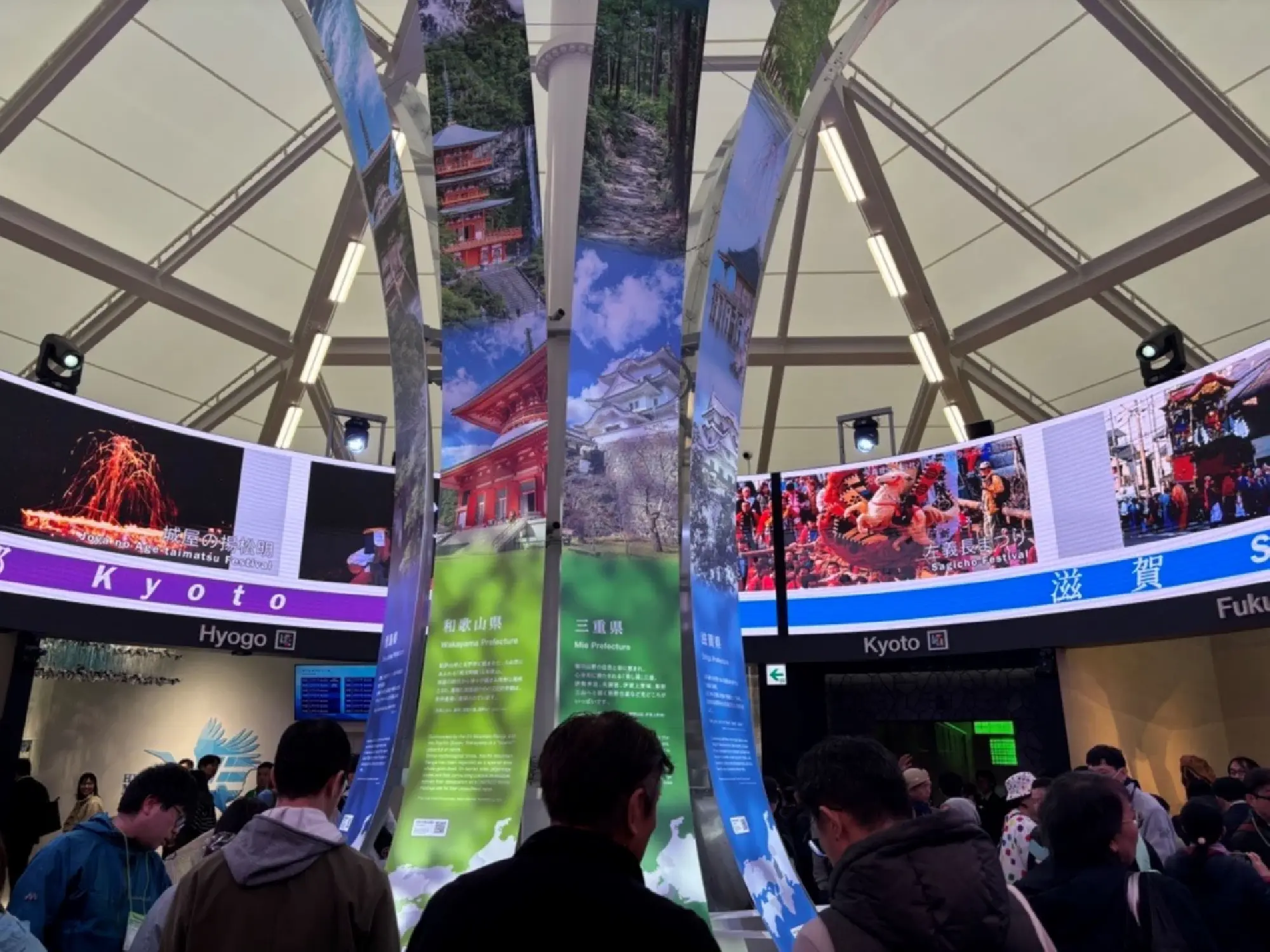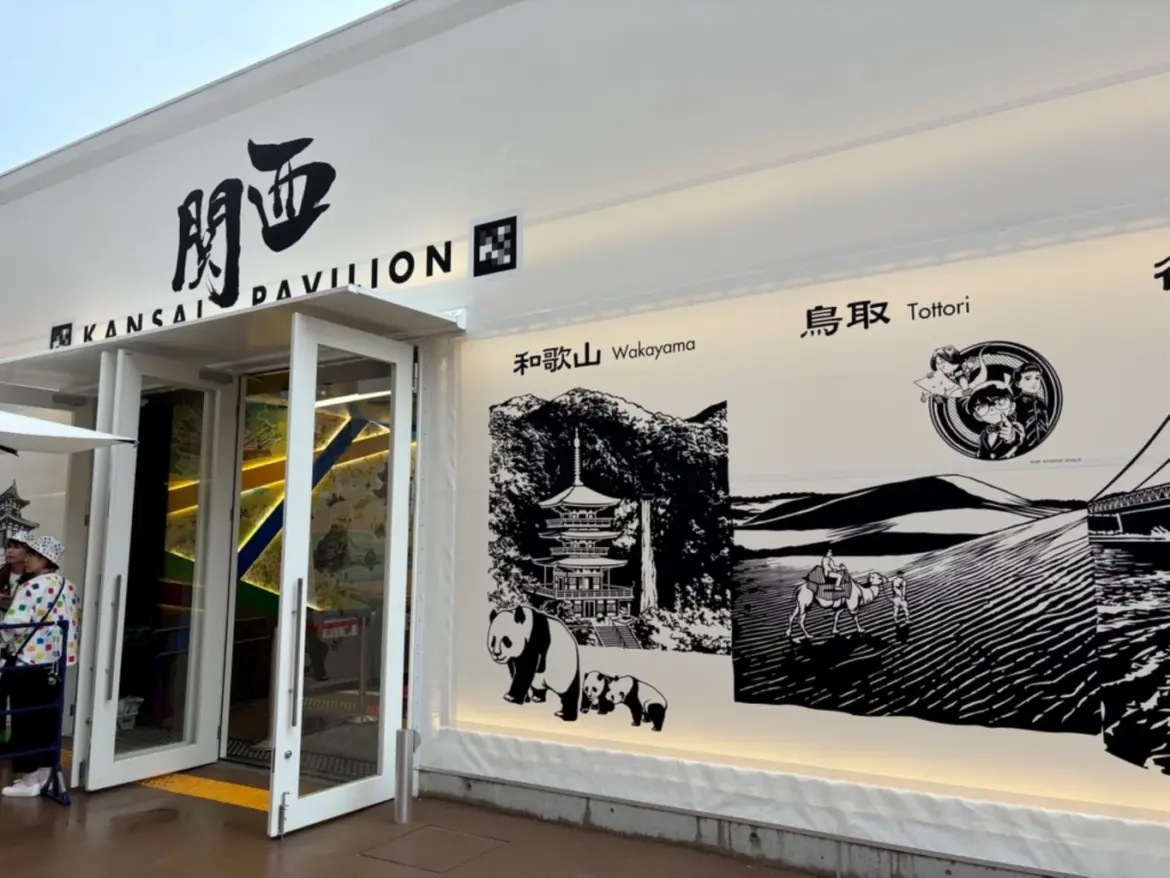Discovering Charms
Many locals are among the visitors packing out the Kansai Pavilion.
Kazumi Yoshimura, 63, a nurse from Kyoto Prefecture in Kansai, discovered many sites to visit in the region. “By learning about the charms of Kansai at this pavilion, I realised I’d passed many attractive places by car and train without noticing,” she said.
Junior high school students from Osaka enjoyed the Tokushima Prefecture booth. “We practised Awa Odori traditional local dance at the booth, and it was fun,” one of the students said with a smile. “We’re already looking forward to coming back in this year’s summer holidays.”
For foreigners who are less familiar with Kansai, the pavilion serves to help deepen their understanding of the region.
Souad El Fenni, a 29-year-old graphic designer from Paris, stayed at the pavilion for three hours, reflecting her strong interest in Japanese culture. “The immersive experiences are mesmerising, especially a projection mapping on sand at the booth of Tottori Prefecture,” known for the Tottori Sand Dunes, she said.
Despite the popularity in France of Japanese animation “Detective Conan,” one of the icons used to promote the booth, Fenni did not know its author, Gosho Aoyama, is from Tottori. “From the experience at the pavilion, I found that Tottori is a very interesting place,” she added.
Tradition of Sustainability
Although the Kansai Pavilion does not have a permanent shop, visitors can buy souvenirs at the nearby Okoshiyasu Kyonokomichi shop, which introduces Kyoto Prefecture’s traditional techniques and flavours, such as lacquerware and “tsukemono” Japanese pickles.
The shop not only sells products from the prefecture, one of the most famous tourist spots in Kansai, but also offers customers unused “furoshiki” traditional wrapping cloths that were donated by Kyoto locals. After shopping, customers can purchase furoshiki for use as reusable bags to carry the souvenirs they bought at the shop.
The shop staff’s uniforms are made from upcycled kimonos, traditional Japanese attire.
“People in Kyoto have been upcycling things in their daily lives, so we’re eager to introduce a sustainable way of living from Kyoto to Expo visitors,” Yoshio Oi, assistant manager of the shop, said.
Yosuke Honda, a 45-year-old company worker from Osaka, entered the shop with his wife to escape the rain and bought a bottle of sake. “If the Expo had not been held in Kansai, I might not have visited the site and learned about this sake,” he added.
Carlos Castellon, 46, a doctor from Spain, came to the Expo as part of a three-week trip across Japan. Castellon and his partner, Leili Huth, a 35-year-old art collector, bought many Kyoto products at the shop, including a pouch made with “Nishijin-ori” textile. They enjoyed the staff’s “very Japanese hospitality” to teach them how to wrap items with furoshiki.
Away from the Expo’s futuristic image, this year’s event aims to allow visitors to feel the strong links between the prefectures of Kansai.
“The lively atmosphere of the Expo is created by the sense of camaraderie among people in Kansai, as well as the momentum we generate to attract people from all over the world to the region,” Mori of the Kansai Pavilion said. “We hope people will see and enjoy Kansai, which is as diverse but cohesive as ‘osechi,'” a wide variety of traditional Japanese New Year foods served in the same box.

By Sakurako Nakagawa


AloJapan.com